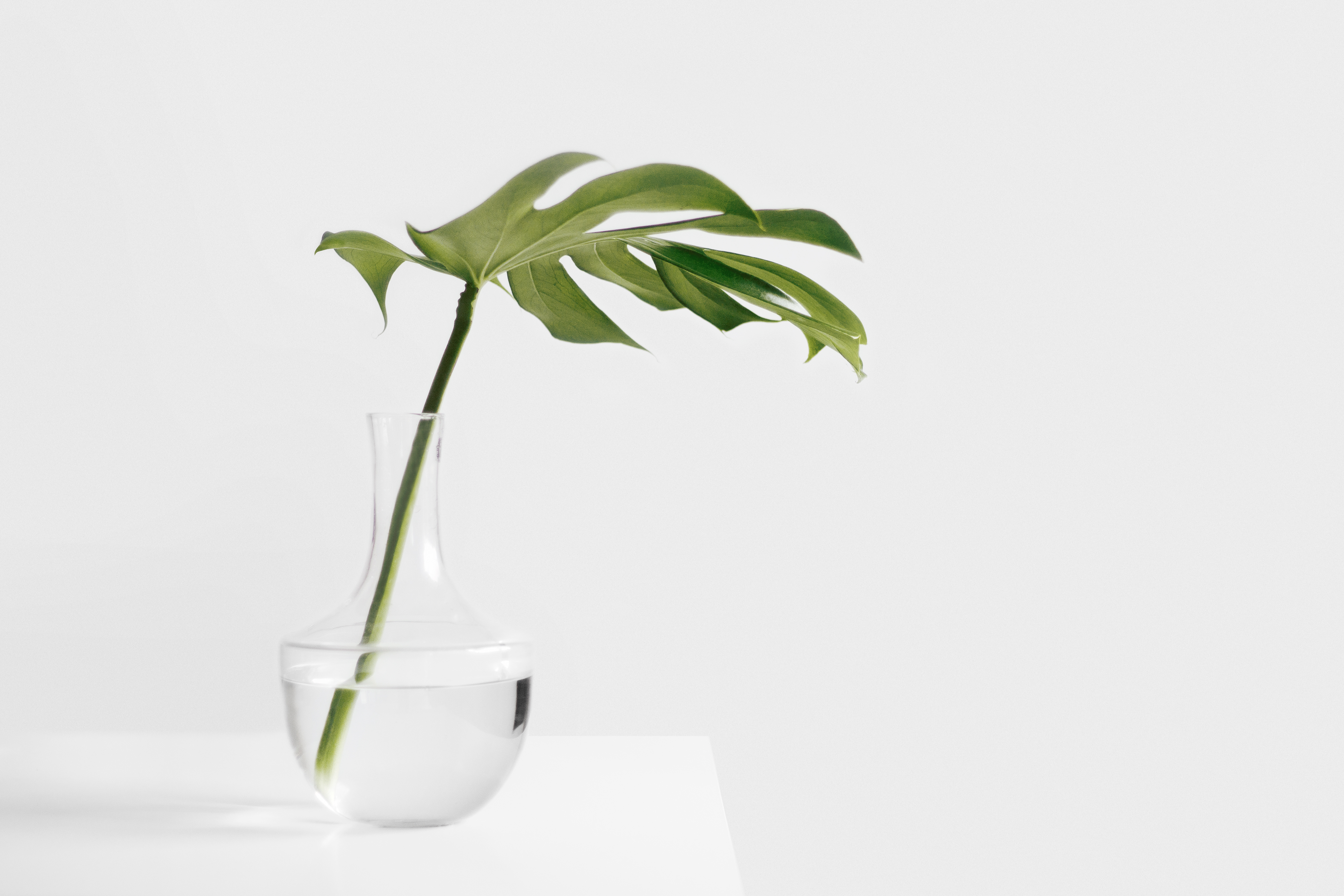
Home is a vital part of life. If we let it, it supports us and our wellbeing. But in return, we have to look after it, cherish it, and respect it. Something I’ve learned since living in my own apartment has been the value that minimalism brings to my life. Minimalism isn’t just about keeping things tidy; it’s a lifestyle. It’s a form of conscious living that makes us think about what we value. It challenges us and forces us to live actively, rather than passively, with our surroundings. Minimalism also ties in so well with environmental awareness. More disposable possessions lead to more waste.
Taking out your own trash each week is an eye-opener. That trash is yours and yours alone. There’s no pretending that anyone else created it. This process of opening my eyes to what I use each day has led to a fierce mission of finding hacks to reduce the waste. I’ve got 5 of them today that you just might want to consider in your own home.
- Binchotan Charcoal Water Filtration –
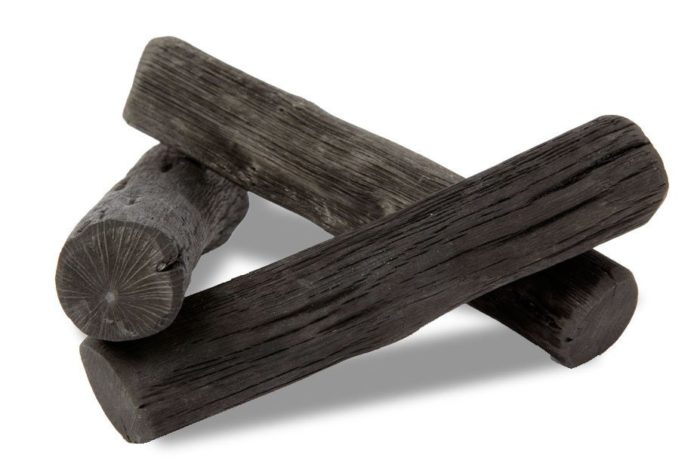 In the UK, I’m lucky enough to be able to drink the water that comes out of the tap. It’s something I completely take for granted until I am abroad and forced to buy bottled water! From this tap, though, I opt for a water filter for purity of taste and filtering out excess chemicals. Standard plastic filters are widely used and some are 100% recyclable, which is great. However, I’m keen for plastic-free alternatives. When I came across binchotan charcoal, I knew I was an instant fan. Binchotan has been used in Japanese cuisine for centuries, but it really comes into its own in water filtration. It is highly porous and able to absorb chemicals such as chlorine from tap water. It also releases calcium, iron, and magnesium, thus improving taste. A bar usually lasts about 3 months (used daily), after which time it is recommended that it be boiled in hot water for 10 minutes and allowed to dry in the sun before being used for a further 3 months. A funky smell comes off of this boiling procedure, which is the release of all the chemicals it has so kindly been storing for you! Don’t be alarmed. And finally, when it comes to the end of its second lease of life, it is completely biodegradable. This means it can be tossed in a compost bin or sprinkled into the soil of your house plants to boost growth! You usually find this method of filtration used with a glass carafe like Black & Blum’s beautiful one. If you decide to get rid of that eventually, the cork is biodegradable and the glass easily recyclable–total win.
In the UK, I’m lucky enough to be able to drink the water that comes out of the tap. It’s something I completely take for granted until I am abroad and forced to buy bottled water! From this tap, though, I opt for a water filter for purity of taste and filtering out excess chemicals. Standard plastic filters are widely used and some are 100% recyclable, which is great. However, I’m keen for plastic-free alternatives. When I came across binchotan charcoal, I knew I was an instant fan. Binchotan has been used in Japanese cuisine for centuries, but it really comes into its own in water filtration. It is highly porous and able to absorb chemicals such as chlorine from tap water. It also releases calcium, iron, and magnesium, thus improving taste. A bar usually lasts about 3 months (used daily), after which time it is recommended that it be boiled in hot water for 10 minutes and allowed to dry in the sun before being used for a further 3 months. A funky smell comes off of this boiling procedure, which is the release of all the chemicals it has so kindly been storing for you! Don’t be alarmed. And finally, when it comes to the end of its second lease of life, it is completely biodegradable. This means it can be tossed in a compost bin or sprinkled into the soil of your house plants to boost growth! You usually find this method of filtration used with a glass carafe like Black & Blum’s beautiful one. If you decide to get rid of that eventually, the cork is biodegradable and the glass easily recyclable–total win. - Reusable Cotton Rounds –
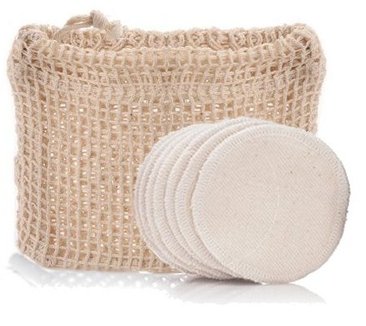 We know about the problems with buying cotton. And as well as our clothes, cotton is of course used in disposable cosmetic pads. There are some great organic options out there, but I was sick of throwing them away every day. This led me to purchase some reusable ones! Mine are made of bamboo and quite large–probably twice the size of a standard cotton round. You simply use in place of a cotton pad or ball, toss in the washing machine, allow to dry and then reuse. I use mine for taking off makeup, acid toning, and applying any ointments–and I reserve one stained one for removing nail polish.
We know about the problems with buying cotton. And as well as our clothes, cotton is of course used in disposable cosmetic pads. There are some great organic options out there, but I was sick of throwing them away every day. This led me to purchase some reusable ones! Mine are made of bamboo and quite large–probably twice the size of a standard cotton round. You simply use in place of a cotton pad or ball, toss in the washing machine, allow to dry and then reuse. I use mine for taking off makeup, acid toning, and applying any ointments–and I reserve one stained one for removing nail polish. - Compostable Cleaning Cloths –
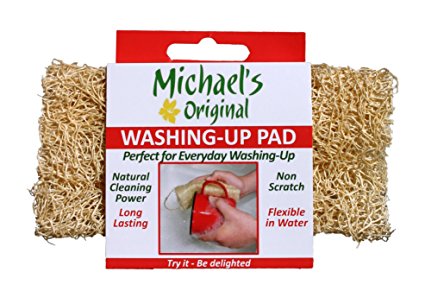 Whether it’s the kitchen or the bathroom, our homes need a good scrub. Cloths naturally wear and tear over time and there isn’t really much you can do to prevent it. The key point, however, comes when that item reaches the end of its life. Is it destined for landfill for the rest of forever, or can it be thrown into compost and biodegrade? There are some great options available if you’re keen to support the latter. From natural bristle brushes made of tampico to viscose sponges to my personal favorite: loofahs, there are some great ways to support biodegradable cleaning in your home.
Whether it’s the kitchen or the bathroom, our homes need a good scrub. Cloths naturally wear and tear over time and there isn’t really much you can do to prevent it. The key point, however, comes when that item reaches the end of its life. Is it destined for landfill for the rest of forever, or can it be thrown into compost and biodegrade? There are some great options available if you’re keen to support the latter. From natural bristle brushes made of tampico to viscose sponges to my personal favorite: loofahs, there are some great ways to support biodegradable cleaning in your home. - Reusable Food Covers –
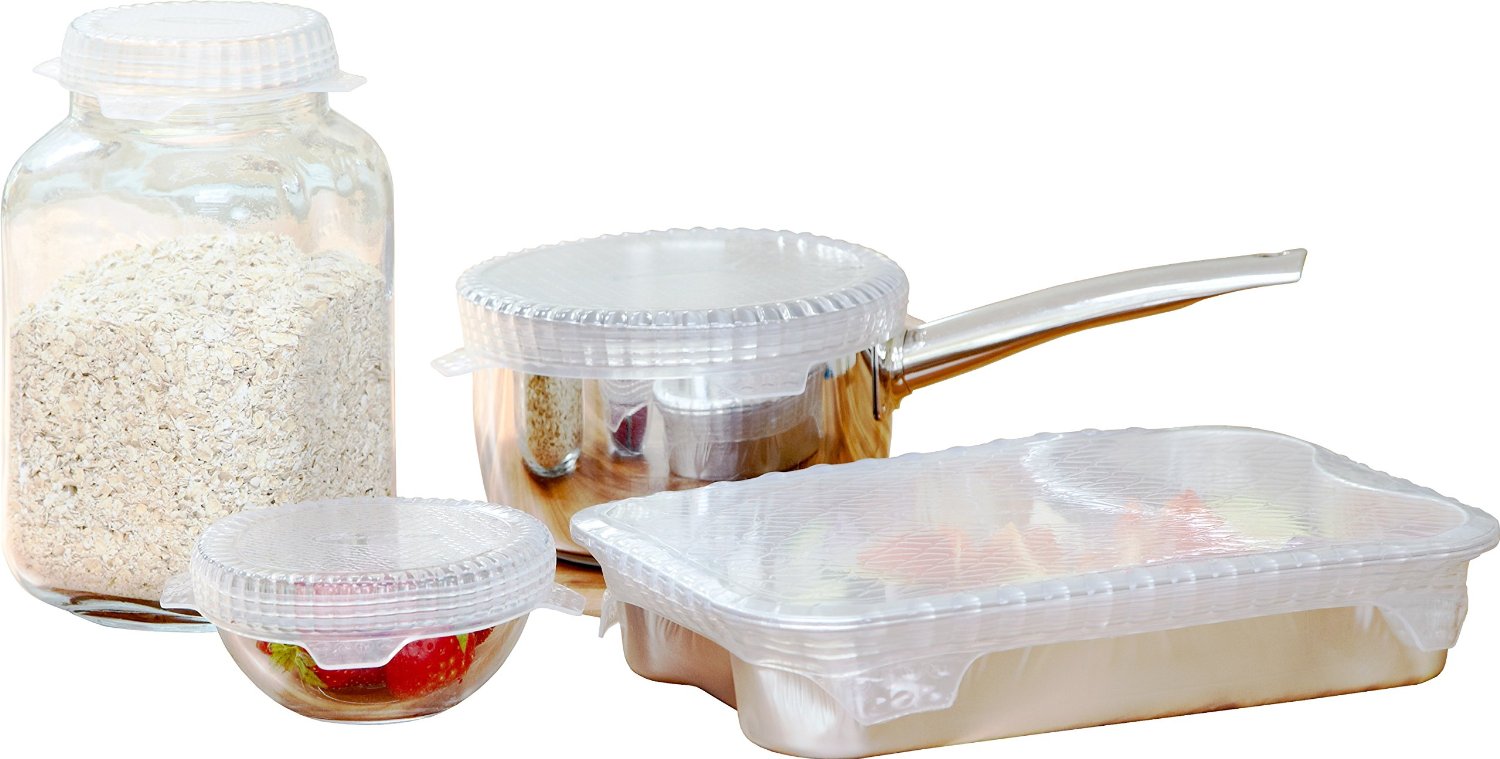 Tupperware and jars with lids are the ideal storage solutions, but many of us reach for cling wrap or foil when we’ve got food to cover–particularly things like pie or lasagne that you don’t want to disturb from their baking dishes. Silicone, stretchy food covers are a great alternative. They’re reusable, will fit any bowl or dish and are more air-tight than cling wrap or foil.
Tupperware and jars with lids are the ideal storage solutions, but many of us reach for cling wrap or foil when we’ve got food to cover–particularly things like pie or lasagne that you don’t want to disturb from their baking dishes. Silicone, stretchy food covers are a great alternative. They’re reusable, will fit any bowl or dish and are more air-tight than cling wrap or foil. - Rag Towels –
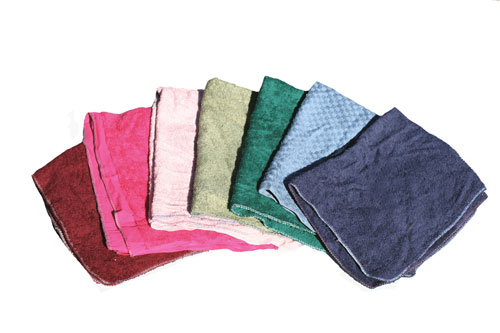 Before you buy your next pack of paper towels, have a look in your linen cupboard and see if you’ve got any old tea towels that you can cut up small and use in its place. For mopping up any spills, cleaning the windows and mirrors or any other routine use that I would have reached for paper towels, these work perfectly fine as a zero-waste alternative. I simply toss them in the wash after using and keep the cycle going.
Before you buy your next pack of paper towels, have a look in your linen cupboard and see if you’ve got any old tea towels that you can cut up small and use in its place. For mopping up any spills, cleaning the windows and mirrors or any other routine use that I would have reached for paper towels, these work perfectly fine as a zero-waste alternative. I simply toss them in the wash after using and keep the cycle going.
Every little change you make has the power to inspire others to follow suit. Invest in a few zero-waste hacks in your home and it will go a long way in reducing your trips to the trash can.
Also by Kat: Why You Should Rethink Your Choice of Toothpaste
Related: Eco-Friendly Alternatives to Plastic Household Items
7 Totally Doable Ways To Create Your Green Kitchen
Get more like this—Subscribe to our daily inspirational newsletter for exclusive content!
__
Photo: Unsplash, Black & Blum, Rawsum, Amazon, Amazon, ThinkActProsper




